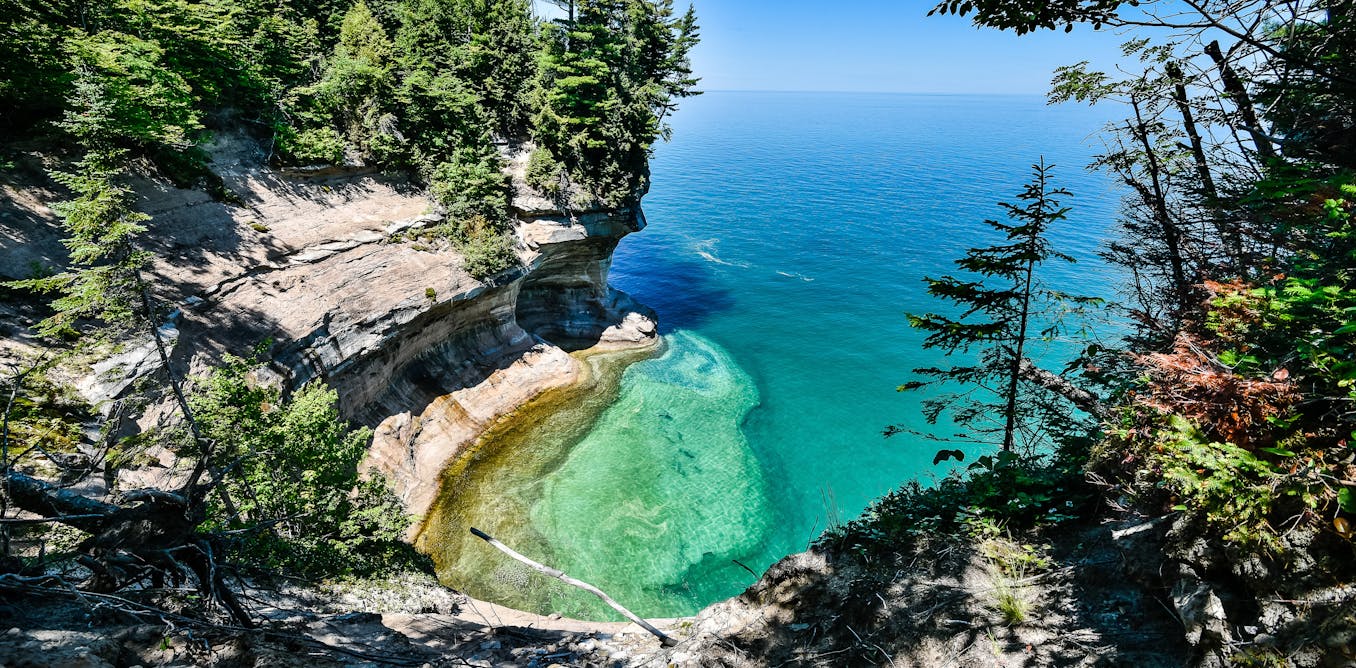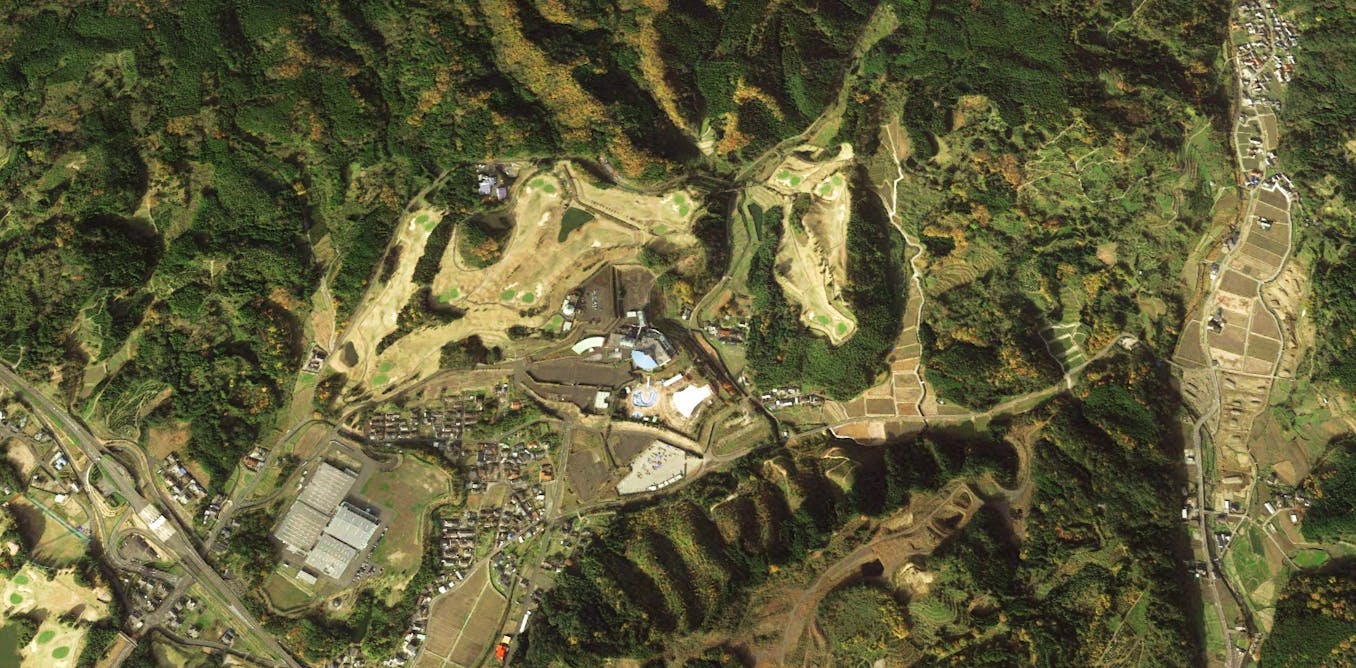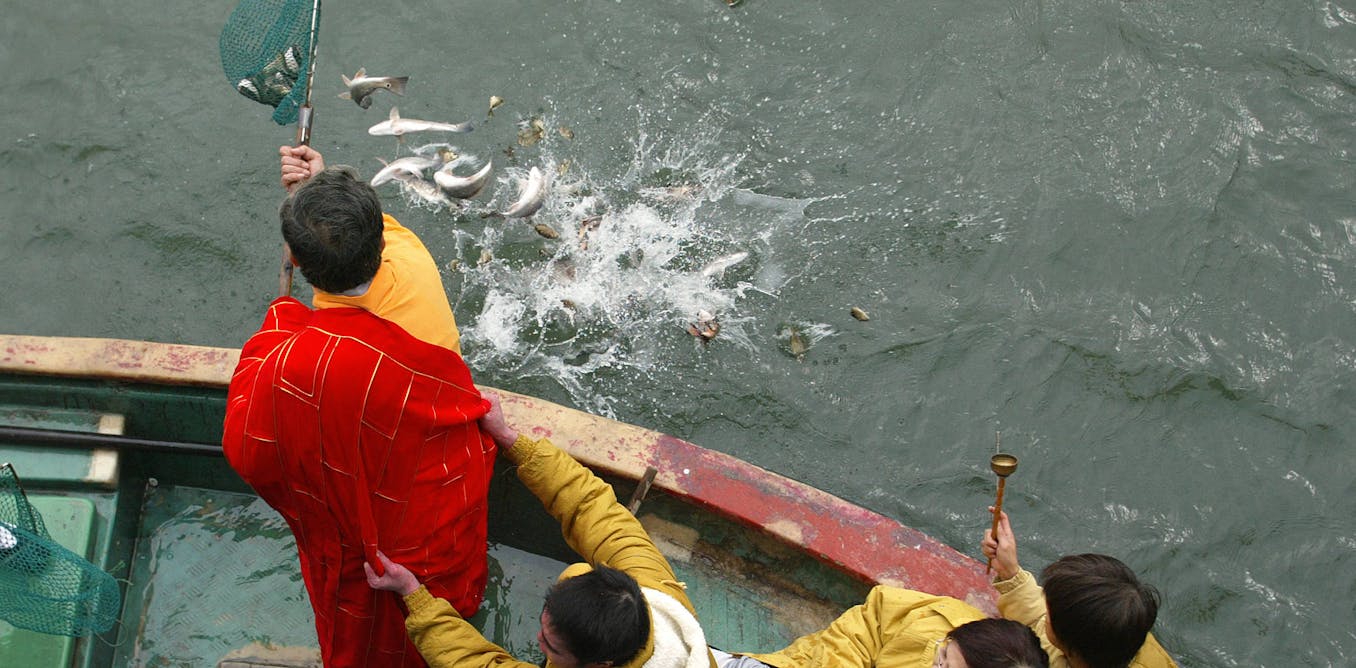If you’ve never had the chance to experience Copacabana Beach and Promenade in Rio de Janeiro, this evening walk video will give you an immersive experience like never before. Filmed in stunning 4K at 60fps and complete with captions, this video provides a detailed look at Copacabana Beach in all its grandeur and beauty. Taking you on a journey from the famous beach to the promenade, and even the night market, this video captures the essence of this iconic location.
The Copacabana Beach walk video also includes a map of the walk, a drone intro, and detailed timings for different sections of the walk. From sand sculptures and the boardwalk to the promenade and night market, you’ll get a sense of what it’s like to stroll along Copacabana Beach as if you were there in person.
In addition to providing an in-depth look at the sights and sounds of Copacabana Beach, this video also offers cultural and historical insight into the area. Learn about the history of Copacabana, including the development of tourism in the area, the significance of landmarks like Fort Copacabana and Fort Duque de Caxias, and the cultural and economic impact of Copacabana on Rio de Janeiro.
With stunning visuals and immersive binaural audio, this video truly transports you to Copacabana Beach, allowing you to experience the vibrant atmosphere and rich heritage of this world-famous location. Whether you’re a seasoned traveler or simply armchair exploring, this video provides a captivating look at Copacabana Beach that will leave you in awe of its beauty and historical significance. So sit back, relax, and let this video take you on an unforgettable evening walk along Copacabana Beach, Rio de Janeiro.
Watch the video by Prowalk Tours
Welcome to Rio de Janeiro’s most famous beach, Copacabana! Copacabana is a bairro (neighborhood) in southern zone of Rio de Janeiro. This popular tourist area, affectionately called Copa, has the highest concentration of hotels in the city.
The beach is 2.5 miles (4 km) long, which includes Leme beach at the far end. The beach, located at the Atlantic shore, stretches from Posto Dois (lifeguard watchtower Two) to Posto Seis (lifeguard watchtower Six). Leme is at Posto Um (lifeguard watchtower One).
There are historic forts at both ends of Copacabana beach; Fort Copacabana, built in 1914, is at the south end by Posto Seis and Fort Duque de Caxias, built in 1779, at the north end. The magnificent Sugar Loaf Mountain can be seen in the background.
The region around Sugar Loaf Mountain, known as Guanabara Bay, was a French colony under Villegaignon in 1555. The Portuguese took over in 1566, changed the name to São Sebastião and eventually renamed it as Rio de Janeiro and the capital of Brazil in 1763.
The region was home to the first protestant settlement with the population growing steadily only in the early 20th century. This area was originally called Sacopenapã (translated from the Tupi language, it means “the way of the socós”, the socós being a kind of bird) until the mid-18th century.
It was renamed after the construction of a chapel holding a replica of the Virgen de Copacabana, the patron saint of Bolivia. It is always busy here: from daybreak until way past sundown.
Given that this is the most popular beach in Rio, and some say, even the world, visitors need to keep a close eye on their belongings here. That being said, I spent two weeks here in Rio and never witnessed a single theft or crime take place.
We are now going to walk up to the famous Copacabana Promenade. The promenade bordering the beach was designed by Roberto Burle Marx and has a Portuguese style black and white tiled wave pattern. There are several sand sculptures along the beach. The sculptures are constantly being rebuilt due to the weather.
Be sure to leave a coin in the tip jar if you take a photo. 🙂 The official currency of Brazil is the Real. Its symbol is R$. One US dollar is equal to about R$5. So simply divide by 5 to get the US dollar value for an item.
A street vendor typically sells a bottle of water for R$3 – R$5. There are coins of 1, 5, 10, 25, 50 cents and 1 real. Notes are issued from 1, 2, 5, 10, 20, 50 and 100 real. Since 1942, Brazil had eight different currencies, starting with the Cruzeiro.
In July 1994, the present-day currency, the Real, replaced the Cruzeiro Real, which circulated for only 10 months. In late 80’s and early 90’s, the hyperinflation forced consumers to purchase their good immediately after they got paid since prices would be even higher the next day.
In 1993, the annual inflation rate was almost 2,500%. As part of a successful plan to stabilize the country’s economy, the Real was introduced as currency in 1994.
According to the Brazilian Institute of Geography and Statistics (IBGE), 160,000 people live in Copacabana and 44,000 or 27.5% of them are 60 years old or older. Residential buildings eleven to thirteen stories high built next to each other dominate this area.
Up until the end of the 19th century, this area was not easily accessible from city center of Rio. During that time, only some fisherman lived here and there were also some nearby farms.
Things changed in 1892 however, with the opening of a tunnel which allowed Copacabana to connect with the areas of Botafogo and downtown Rio.
If you look Rio de Janeiro in the Satellite view on Google Earth, you will see that there are several hills right behind Copacabana that cut it off from the city. As you look at Google Earth, you will see a slightly longer beach south of Copacabana. That is Ipanema beach.
Rio de Janeiro is the second most populous city in Brazil (after Sao Paulo) and the sixth-most populous city in the Americas. Sao Paulo has the largest population the Americas with over 12 million residents. New Your City (#3) has around 9 million. Rio was founded by the Portuguese in 1565.
In 1763, it became the capital of the State of Brazil, a state of the Portuguese Empire. Rio remained as the capital of the pluricontinental monarchy until 1822, when the Brazilian War of Independence began.
This is one of the few instances in history that the capital of a colonizing country officially shifted to a city in one of its colonies. The Brazilian War of Independence lasted just over 2 years (1822-1824).
In 1824, in the wake of the adoption of the Constitution of the Empire of Brazil on March 25, the United States of America became the first nation to recognize the independence of Brazil.
With the loss of its only territory in the Americas and a significant portion of its income, Portugal quickly turned its attention to increasing the commercial productivity of its various African possessions (mainly Angola and Mozambique).
Rio de Janeiro is one of the most visited cities in the Southern Hemisphere and is known for its natural settings, carnival, samba, bossa nova, and balneario beaches. There are several of these beach kiosks all along the beach. Each one has live music.
Colorful art can be found at all the markets and all along the beach. A large painting typically costs around $80 (based on what I saw). More live music! I do not speak Portuguese and I did not run into too many people who spoke English.
When Rio was the capital of Brazil, Copacabana was considered one of the best neighborhoods in the country. Copacabana began to grow more rapidly with the inauguration of Avenida Atlântica here along the beach. In 1923, the Copacabana Palace Hotel first opened which marked the beginning of the development of tourism in the area.
The Copacabana Palace also housed a casino until 1946, when gambling was banned in the country. This also resulted in wealthy locals, known as Cariocas, to move into the area. However, fame also brought with it the development of the Favelas (slums), which is very much a part of Rio’s life today.
Cariocas love the beach and beach soccer and volleyball are favorite sports that are promoted at arenas along Copacabana Beach. Another popular sport here at the beach is Frescobol, which is like beach tennis.
During the summer, the World Cup International Beach Volleyball competition is held at the beach so if you are in town don’t forget to catch up with a game. Swimmers and surfers are an integral part of the beach and represent the true Carioca lifestyle.
While sunbathing may cease in the evenings, the beach comes alive at night with many of the barracas or beach bars doing brisk business through the night. The Copacabana Beach’s New Year’s festivities are known worldwide and are recognized as the second best party, second only to New York’s Times Square celebrations.
People dress in white, which is considered to be an auspicious color for the occasion and make an offering of a white flower to Yemanjá, the goddess of the sea. Elaborate fireworks take place at midnight and light up the sky for half an hour.
In the past 10 years, concerts by popular artists have also formed a part of the New Year events and have included performances of singers like Rod Stewart, Lenny Kravitz and The Rolling Stones.
In 1994, the New Year’s Eve celebrations featured a Rod Stewart concert with an attendance of 3.5 million, making it the largest concert crowd ever. Most beach kiosks are open around the clock, offering some of the most delicious traditional snacks, caipirinhas, a local alcoholic beverage and also cold beer.
If you are enjoying this tour, please leave a LIKE on the video and SHARE it with a friend. Thank you! On Sundays and holidays, the road to our left is closed to cars, giving residents and tourists more space for activities along the beach.
I filmed a bike ride along the beaches in Copacabana and Ipanema on Sunday, but the weather was overcast. I’m not sure if I will post that video. On October 2, 2009, 100,000 people filled the beach for a huge beach party as the IOC announced Rio would be hosting the 2016 Olympics.
This is a sign for the upcoming Rio Carnival 2024, which is week long celebration starting on February 9th. Street parades, blocos, and bandas take place throughout the city of Rio during Carnival, the most famous and largest carnival celebration of the world.
During Carnival, bandas (bands) will play traditional Carnival music sometimes even sang or performed by well-known singers in the country. The songs can be very old, dating back to the early 1900s but the crowd know the lyrics and sings it out loud.
Blocos are street bands that mobilize crowds on the streets and are the main popular expression of Brazilian Carnival. These parades fall under the term “street carnival”, and happen during a period of about one month, beginning before and finishing after Carnival.
I saw several while I was here. I rode through one while I was filming the bike ride. Both the blocos and bandas give people a chance to walk behind a music truck in a predetermined route. I stopped here and took a break at the kiosk for 30 minutes.
There is a channel on Instagram called “@blocosrj.oficial” where you can get all the information on the current blocos and bandas. When you want to join the bandas and blocos, make sure that you don’t need to get there driving, because you can expect non-moving traffic.
Leave items such as credit cards, mobile phones, and large amounts of cash back at the hotel. During Carnival, the Sambadrome hosts the annual parade of Samba Schools. The Samba Parades take place in the Sambadrome Marquês de Sapucaí each night of the Rio Carnival.
The Sambadrome Parades are the main event of Carnival, as 90,000 ticketed spectators take part each night. The most prestigious of Rio de Janeiro’s Samba Schools square off as each school gets its turn to parade down the 700 meter stretch of the samba runway.
There are judges seated at specific locations along the parade route, checking for enthusiasm and audience engagement, watching the dance moves and the costumes. At the end of Rio Carnival, a winner is announced and every samba school is ranked according to who receives the highest scores from the judges.
The first Samba School begins its procession at 9PM. Each school has approximately 85 minutes to complete the entire procession. Getting around Rio is very easy whether by taxi/Uber, the subway or by bike.
I took a taxi from the airport and the cost was $40. I took an Uber to the airport, and the cost was $11. The ride took about 30 minutes. If you open up Google Maps, and turn on the “Transit” layer, you can see the subway lines here in Rio.
The Orange Line, passes through Ipanema and Copacabana, continues through Botafogo and downtown, and then ends in the Tijuca district. The subway line passes by most of the main sites in Rio. A single subway ticket costs $1.63. Here in Rio though, buses are the main form of public transportation.
There are nearly 440 municipal bus lines serving over four million passengers every day, in addition to intercity lines. You may have noticed people riding around on orange bikes during this walk. These are the public bicycles operated by Bike Itaú. You can check out the bikes from stations all over the city.
The cost to ride the bikes is $0.10 per minute for a regular bike or $0.12 per minute for an electric bike. It can be very difficult to find a working electric bike. I would guess that 99% of the bikes you will find are not electric.
You can pay using the Bike Itaú app or by using the Uber app. I used Uber since that was already installed on my phone. The Bike Itaú requires you to enter in your passport information.
Rio de Janeiro is Brazil’s primary tourist attraction and resort. It receives the most visitors per year of any city in South America with 2.82 million international tourists a year. In you a moment, you may notice a change in the image quality of the video.
I forgot to film the street market on this night, so I went back out a few nights later and filmed the market, this time with a different camera. Here is where you can find all the trinkets and souvenirs that you might need during your trip to Rio. 🙂
Thanks for watching! If you enjoyed this tour, please leave a LIKE on the video and SHARE it with a friend. Thank you. Ciao.
Video “Copacabana Beach Evening Walk – Rio de Janeiro, 🇧🇷 – 4K60fps with Captions” was uploaded on 02/17/2024. Watch all the latest Videos by Prowalk Tours on Gretopia




































